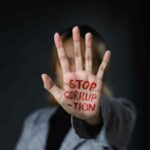- More than half of South Africa’s water treatment plants don’t produce water that’s safe to drink, and more than a third of the ones treating sewage discharge dirty water back into rivers.
- Dysfunctional water systems mean germs that can make people sick can make their way into dams and rivers, and the water that ends up in our taps.
- In this interview for our monthly TV show, Health Beat, environmental scientist Ayesha Laher tells Mia Malan how to check if your water is safe to drink and what you can do to clean it if it’s not safe.
Healthy lives depend on healthy water — from growing food to making sure we live in hygienic conditions.
But it’s a limited resource: of all the water on Earth only about 3% is fresh, and of that, only 0.5% is easily accessible to humans.
It’s also a finite resource, because the water found on the surface of our planet — in dams, lakes and rivers — is locked into a continuous loop between the clouds and the ground, called the water cycle. The water we have on Earth today is all that we’ll ever have.
This means the water going out of our homes’ drains and toilets needs to be cleaned, so that it can go back into rivers and dams and get drawn out again to run into our taps.
But about four in 10 wastewater treatment plants in South Africa don’t produce clean discharge, and about half of the facilities that have to make sure clean water goes into our taps don’t work well either.
“So, is it safer to use borehole water or store water in a tank instead?” Mia Malan asked environmental scientist Ayesha Laher during the latest episode of Health Beat, Bhekisisa’s monthly TV show.
Here’s what she had to say about keeping water safe and clean — and why it’s important.
Watch the full interview
Mia Malan (MM): Many of South Africa’s water treatment plants don’t produce safe drinking water. Why is that?
Ayesha Laher (AL): [About] 50% do not produce safe water. [At] most of them it’s due to a lack of routine maintenance, a lack of investment in infrastructure [or] they don’t have effective operations or management. And [so] we end up with unsafe water that gets in taps.
MM: Are there any plants that do work well, and where are they?
AL: In Gauteng we have Rand Water, which is the water board that supplies water to the entire Gauteng and other outlying areas. They’re world class and produce water of exceptional quality. So, if you live in Gauteng, you have no problems.
MM: Gauteng is safe, but Mpumalanga seems to be a province of concern because most plants aren’t up to scratch. Are there other provinces like this?
AL: There are a number of provinces where the water quality is quite bad: the Northwest, Mpumalanga, parts of the Free State and the Northern Cape — they’re actually quite poor performing with regard to microbiological compliance [in other words, keeping water free of harmful germs]. So that means the water that’s coming out of the tap has the potential to make you sick.
[WATCH] How Tshwane’s water is cleaned
MM: There seems to be a big issue in the Free State with [treating] wastewater. Why does that water need to be cleaned?
AL: Water is a finite resource and we need to protect it. All over the world we take our wastewater [the water that comes out of our homes] and put it [through] wastewater treatment works. [These are] mostly biological systems that treat the wastewater so that it can be released into a river and be reused again — safely.
MM: Who checks that treatment plants do water quality tests?
AL: [It’s the responsibility of] the department of water and sanitation. Under the National Water Act, they are the regulator and the custodian of water in South Africa. Technically, all the water in the country belongs to the minister [of water and sanitation] and the department will monitor [it]. In the regulations, every municipality that is a water service authority — meaning they’re responsible for treating water and sewage — is required to monitor their water and wastewater against certain limits and standards every month. They must give information to the department, to check whether they’re compliant or not.
MM: If the tests show that they’re not compliant, whose job is it to intervene, and how often do they do that?
AL: It’s the department of water and sanitation’s job.The [latest] Green Drop report found more than [a third of] plants that are in a critical risk category, meaning they’re [in] really bad [shape]. The department [of water and sanitation] placed [the municipalities] under supervision, and told them [to come up with] a plan [to fix their plants]. More than 60% [of these municipalities], didn’t bother to submit [such] plans. It’s sad because the effluent they produce has a direct effect on human beings’ lives and on the environment.
[WATCH] Why this community is fed up with pollution in the Vaal River
MM: How do I know that the water coming out of my tap is safe from germs, and what can I do if it’s not?
AL: You can use a simple strip test [which you can buy online] to see whether it is safe or not. The quickest thing you can do [if you’re water is not germ-free] is to boil it. Boiling will kill all the germs. If you don’t have electricity to boil water, you can also add one teaspoon of normal household bleach [in 20–25 litres of water] and leave it to work for [at least two hours]. Then you can safely drink the water.
MM: If you store water in a tank, should it be cleaned in a special way?
AL: Even if you store municipal water that has already been cleaned, you must make sure that it doesn’t stay [in the tank] too long. If the water sits for a long time, germs can start growing in there. [Putting] a UV light in the lid of your tank will kill all pathogens [disease-causing organisms] in the water. You can also put in chlorine, but there mustn’t be too much or too little [of it]. Rainwater is quite dangerous because if you get rainwater from your roof, there’s a chance that the roof is dirty [with things like] bird droppings [which contain germs]. You either have to treat that water [if you want to drink it] or use it only for things like washing your car.
MM: Does borehole water need cleaning?
AL: Depending on the amount of human activity [in an area], there can be pathogens, fertilisers or acid mine drainage that gets into groundwater — which could make the water unsafe. When you drill a borehole, [make sure] to test the water by sending a sample to a laboratory to be tested for [any harmful substances].










